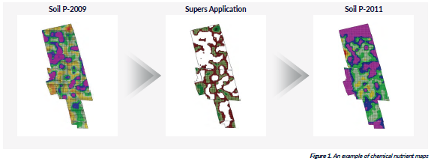OmniPrecise®
In an environment with rising production costs and shrinking profit margins, it is important for the farmer to optimise the management of all the resources at his disposal. OmniPrecise® offers the solution. Using soil physical and chemical analyses, variable rate technology, zone management, proximal and remote sensing, OmniPrecise®, together with the Omnia agronomist, can bring about a significant improvement in efficiency and thereby lowering the risks associated with production.
It is of the utmost importance to identify variation within fields, to quantify the level of risk associated within each zone and to manage it accordingly. OmniPrecise® offers several solutions and models that assist the farmer to manage the risks and opportunities that the season might offer by running different scenarios and to select the best fertilizer strategy according to his specific circumstances and risk appetite.
The solutions offered by OmniPrecise® enables farmers to make informed decisions by preventing under-fertilizing on high potential areas and over-fertilizing on low potential areas – in other words the right product, at the right time, in the right place, at the right rate.

SOIL NUTRIENT ANALYSIS
Topsoil (0-250 mm) and subsoil (300 – 600 mm) samples are taken on a grid pattern. The size varies from 0.25 hectares for intensive crops to one or two hectares for extensive crops. These samples are analysed by Omnia’s Chemtech Laboratories and maps of the spatial distribution of the different soil attributes are generated. Samples are routinely analysed for soil cations, pH, sulphur (S), and phosphorus (P), with non-routine options for total N (nitrate-N and ammonium-N), micro-nutrients (Fe, Mn, Zn, Cu, Mo, B), organic carbon (C), soil texture as well as volumetric stone fraction.
These chemical maps are then used to create prescription maps for variable rate application (VRA) of soil amendments and fertilizers. This process is repeated every one to three years, depending on the type of crop.

SOIL CLASSIFICATION
Soil classification is done according to a fixed grid or based on predetermined management zones. Soil augers (hand or mechanical) are used to take soil cores from which soil physical properties are described at every observation point. These observations are used to compile maps of soil forms, effective soil depth, plant available water, long term soil potential, suggested production withdrawal and topography. Soil maps, together with inputs from Omnia agronomists and irrigation equipment suppliers, are also used for planning and development of new irrigation fields.
Soil mapping is a once-off process as the soil physical properties of soils only change over very long periods.

VARIABLE RATE APPLICATION (VRA)
VRA prescription maps are based on selected soil physical and soil chemical properties and generated according to the Agronomist instructions. Prescriptions include variable rate maps for seed, fertilizers, lime, chemicals, and other soil amendments. VRA maps are exported in the specific format required by the farmer’s equipment.

YIELD MONITORING
Precision farming is currently regarded as the most promising agronomic approach towards sustainability. A direct correlation obviously exists between soil potential and actual yield and therefore yield monitor data not only assists in the evaluation of soil properties, but it is also used to support management decisions regarding variable application. With the use of yield monitoring technology producers can easily detect which aspects to focus on to ensure optimal performance of assets and inputs.
It is universally proven that variable rate applications of inputs, also known as site-specific management (or zone management), can improve farm profits and soil health. OMNI-PRECISE® offers a unique solution to assist farmers with identifying and managing variability within fields to increase efficiency of fertilizer applications and thereby lowering their risk.



